Milwaukee Bridge War, 1845
Introduction
Text-to-speech Audio
Images
Bridge War of 1845 by Clarence Boyce Monegar
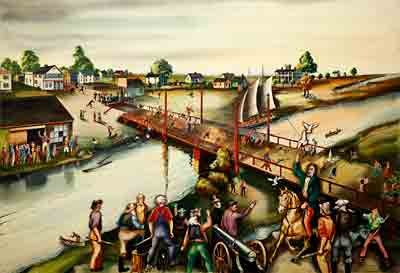
Milwaukee in 1858, after a drawing by George J. Robertson; lithograph by David William Moody. - Library of Congress Prints and Photographs Division Washington, D.C.
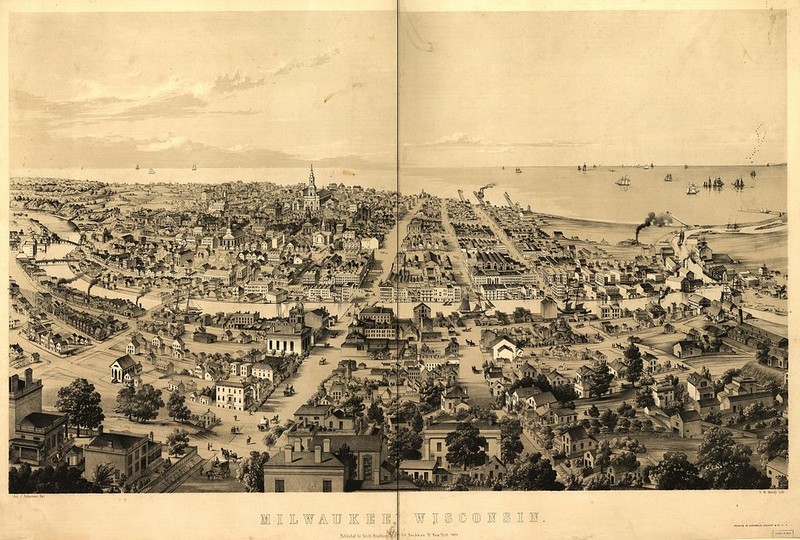
Drawing depicting the destruction of the western portion of the bridge in 1845
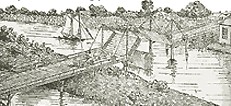
"War of bridges" here 81 years ago, newspaper clipping, published in Milwaukee Wisconsin News on May 8, 1926
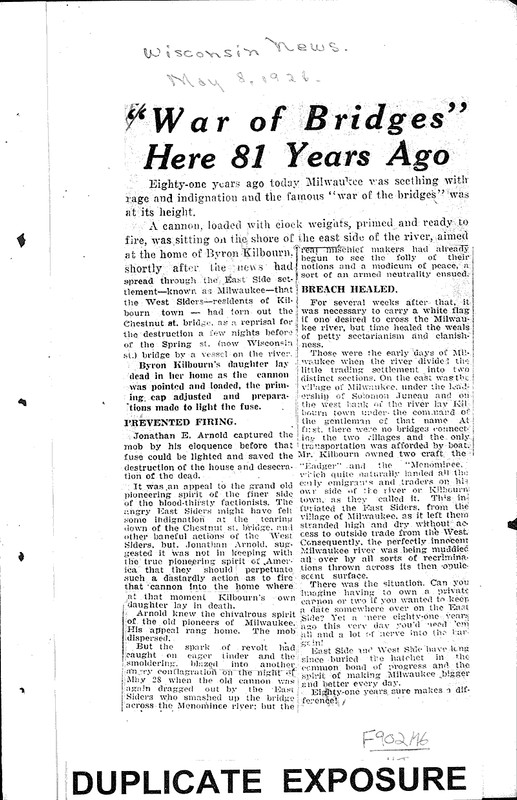
This marker on the River Walk offers a brief history of the Bridge War. For more information, please click the links below.
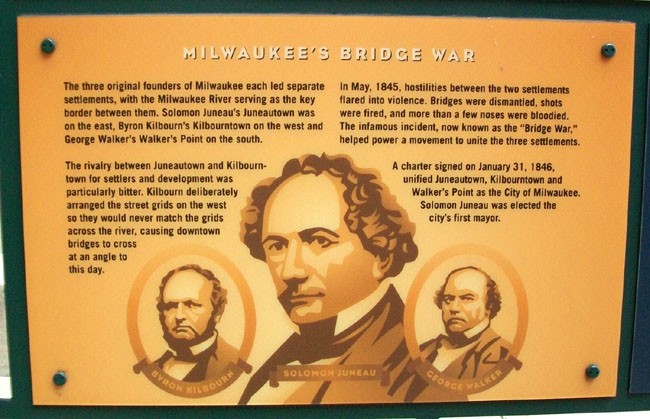
Backstory and Context
Text-to-speech Audio
The Violent Birth of Milwaukee
Although Milwaukee may be the largest city in Wisconsin, Green Bay was the leading community of American settlers of European descent in the first decades of the 19th century- the decades before Wisconsin became a state. Green Bay was the territory’s most prosperous area owing to its role in the fur trade. The area around present-day Milwaukee began to prosper a decade later for the same reason-the fur trade.
The first fur trading post in the area was established toward the end of the 18th century by French Canadian Jean Baptiste Mirandeau and Jacques Vieau. In 1818, Solomon Juneau of the American Fur Company arrived in Milwaukee and married Vieau’s daughter, Josette Vieau. The Juneau’s moved their trading post in 1825 to the eastern bank of the Milwaukee River. It was here the Juneau’s founded Juneautown and started selling plots in 1835.
On the western bank of the Milwaukee River, Byron Kilbourn, a government surveyor who came to Milwaukee from Green Bay as the area seemed promising for commerce, established Kilbourntown in competition with Juneau’s settlement. In fact, to distinguish the two areas, Kilbourn made sure that the streets running toward the river did not match with Juneau’s, which is the reason why many of Milwaukee’s bridges are angled today. Also, historians state that when Kilbourn handed out maps of the area, those maps only showed Kilbourntown with no mention of Juneautown. To the south of the Milwaukee River, George Walker’s area was growing, and three towns in close vicinity found themselves at great competition.
By 1840, the ferry system crossing the Milwaukee River between the fast growing towns was deemed inadequate by the Wisconsin Territorial Legislature, and County Commissioners began building a drawbridge. The consolidation of Juneautown and Kilborntown did not appease the inhabitants' strong partisan feelings, and the two towns heavily disputed over who would actually pay for the bridge. At the same time, Kilbourne was trying to isolate Juneautown with hopes of making the area a “satellite” of his area. The building of the bridge, however, thwarted these plans. Over the course of five years, with heated debate building during this time, the conflict reached a sparking point in 1845 when Kilbourn and his supporters destroyed the west end of the bridge.1
Following the destruction of the western portion of the bridge, inhabitants from the east side (Juneautown) gathered at the river, effectively forming a mob. During two weeks, no violence erupted, but then, in an attempt to cut off the west side from the south and east, a vigilante group from Juneautown destroyed two smaller bridges. Skirmishes soon broke out, and sources state that the east siders at one point had a cannon aimed directly at Kilbourn’s house. Though none were killed during the skirmishes, several were seriously injured, and the mobs dispersed without the skirmishes escalating (due to, what some would say, the eloquent speeches of Jonathan E. Arnold). For several weeks after the violence, it was necessary to carry a white flag when crossing the river.
In 1846, after a decade of rivalry, a legal process merged Juneautown, Kilborntown, and Walker’s Point into the City of Milwaukee.2
Historical Marker Inscription, located on the North Riverwalk Way near West Wisconsin Avenue
“The three original founders of Milwaukee each led separate settlements, with the Milwaukee River serving as the key border between them. Solomon Juneau's Juneautown was on the east, Byron Kilbourn's Kilbourntown on the west and George Walker's Walker's Point on the south.
The rivalry between Juneautown and Kilbountown for settlers and development was particularly bitter. Kilbourn deliberately arranged the street grids on the west so they would never match the grids across the river, causing downtown bridges to cross at an angle to this day.
In May, 1845, hostilities between the two settlements flared into violence. Bridges were dismantled, shots were fired, and more than a few noses were bloodied. The infamous incident, now known as the "Bridge War," helped power a movement to unite the three settlements.
A charter signed on January 31, 1846, unified Juneautown, Kilbourntown and Walker's Point as the City of Milwaukee. Solomon Juneau was elected the city's first mayor.”3
Cite This Entry
Admin, Clio. "Milwaukee Bridge War, 1845." Clio: Your Guide to History. December 17, 2016. Accessed April 25, 2025. https://theclio.com/tour/934/7/reverse

